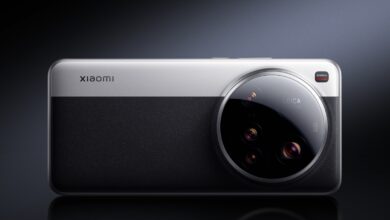Who-Fi: AI Wi-Fi Tracks People Without Cameras

Who-Fi: AI-Powered Wi-Fi Tracking Technology
Who-Fi is a revolutionary technology that utilizes artificial intelligence (AI) to identify and track individuals using standard Wi-Fi signals. Unlike traditional surveillance methods that rely on cameras or other visual sensors, Who-Fi operates discreetly and passively, raising both excitement and concerns about the future of security and privacy.
This experimental technology, still in its early stages, has the potential to transform various sectors, from security and surveillance to healthcare and smart homes. However, its implications for personal privacy and potential misuse necessitate careful consideration and ethical guidelines.
How Who-Fi Works: Decoding Wi-Fi Signals
At its core, Who-Fi leverages the power of AI to analyze the subtle distortions in Wi-Fi signals caused by human presence. When a person moves within a Wi-Fi network’s range, their body interacts with the radio waves, creating unique patterns that can be interpreted as a biometric signature.
This process involves the following key components:
- Wi-Fi Signal: Standard 2.4GHz Wi-Fi signals are used as the foundation for the technology.
- Channel State Information (CSI): Who-Fi analyzes CSI, which reflects changes in signal strength and phase as Wi-Fi signals bounce off objects and people in the environment.
- Transformer-Based Neural Network: A sophisticated AI model, similar to those used in large language models (LLMs), processes the CSI data to identify and interpret the unique patterns associated with individuals.
The Science Behind the Signal
Think of it like radar or sonar, but using Wi-Fi. Every human body creates a unique distortion in the Wi-Fi signal’s path. This distortion is then translated into a biometric signature, as unique as a fingerprint or retinal scan.
Once the system is trained on these signatures, it can perform the following:
- Track Movement: Monitor an individual’s movement within the network’s range.
- Identify Individuals: Recognize individuals even after they leave and re-enter the network.
- Capture Body Movement Data: Potentially recognize sign language or other gestures.
Advantages of Who-Fi
The primary advantage of Who-Fi lies in its ability to operate without any visual or auditory sensors. This makes it a highly discreet and potentially cost-effective surveillance solution. Other key benefits include:
- Non-Invasive: No cameras or microphones are required, minimizing privacy concerns.
- Cost-Effective: The system can be deployed using standard Wi-Fi equipment.
- High Precision: Research suggests Who-Fi can achieve high accuracy in identifying and tracking individuals, even through walls.
- Evasion Resistance: It’s difficult to detect because it uses passive RF sensing.
Performance and Accuracy
Studies have shown impressive results regarding Who-Fi’s performance. Even with the target walking at a normal pace behind a wall, the system achieved a precision rate of 95.5%. The system’s accuracy remains consistent regardless of clothing or backpacks.
Key Performance Metrics:
- Precision: Up to 95.5% accuracy in identifying individuals.
- Simultaneous Tracking: Can track up to nine individuals at once.
- Evasion: Difficult to detect by conventional surveillance detection methods.
Potential Applications of Who-Fi
Who-Fi’s capabilities open up a wide range of potential applications across various sectors:
- Security and Surveillance: Enhanced security systems for homes, businesses, and public spaces.
- Healthcare: Monitoring patients’ movements and activities in hospitals and care facilities.
- Smart Homes: Personalized automation based on individual identification and location.
- Retail: Tracking customer behavior and optimizing store layouts.
Ethical Considerations and Privacy Concerns
While Who-Fi offers numerous benefits, it also raises significant ethical concerns and privacy implications. The ability to track and identify individuals without their knowledge or consent could lead to:
- Surveillance Abuse: Potential for misuse by governments, corporations, or individuals.
- Privacy Violations: Collection and storage of sensitive biometric data without proper safeguards.
- Discrimination: Potential for biased algorithms to discriminate against certain groups.
Addressing the Challenges
To mitigate these risks, it is crucial to establish clear ethical guidelines and regulations governing the use of Who-Fi technology. This includes:
- Transparency: Openly disclosing the use of Who-Fi in public spaces.
- Consent: Obtaining informed consent from individuals before tracking them.
- Data Security: Implementing robust security measures to protect biometric data from unauthorized access.
- Accountability: Establishing mechanisms for redress in case of privacy violations.
The Future of Wi-Fi Technology and Biometrics
Who-Fi represents a significant advancement in Wi-Fi technology, blurring the lines between connectivity and biometrics. As the technology continues to evolve, it is essential to engage in a broad societal dialogue to ensure its responsible and ethical deployment.
| Feature | Description |
|---|---|
| Technology | AI-powered Wi-Fi tracking and identification |
| Input | Standard 2.4GHz Wi-Fi signals |
| Output | Individual identification, movement tracking, biometric signatures |
| Privacy Concerns | Potential for surveillance abuse, data breaches, and discrimination |
| Ethical Response | Transparency, consent, data security, and accountability |




